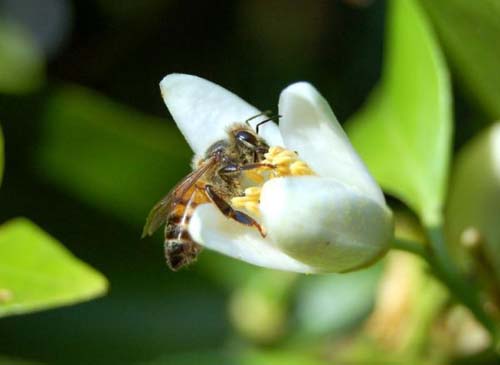Insects evolved a completely different tactic to sniff
Darwin's tree of life displays the path and time of evolution that takes place to reach today's diverse life. Currently, new findings show that this tree of life, the symbol of evolution, may need to be redrawn. In the work published in the April 13 online edition of Nature, researchers at Rockefeller University and Tokyo University revealed that insects have adopted a fundamentally different odor tracking strategy with Other creatures - unexpected and controversial findings can overturn the notion of excellence in this area.
Since 1991, researchers have assumed that all vertebrate and invertebrate species smell by using a complex biological apparatus like a Rube Goldberg device. For example, a person who clicks a doorbell will create a series of complicated, somewhat silly steps, to the top of which is quite simple to open the door.
In the case of insect sniffing, scientists believe that when odor molecules float in the air onto the insect's nose, they cling to a broad protein (called the odor receptor group). protein-G bilateral on the cell surface and perform a series of similar complicated steps to open nearby molecular gates, signaling the brain that a kind of odor is present.
According to co-author Leslie Vosshall, Head of the Laboratory of Neurological and Behavioral Genetics at Rockefeller University, 'This happens with nematodes, with mammals and in other known vertebrate species. So it is absurd to think that insects use a completely different strategy to track the smell. But here, we prove that insects have skipped all intermediate steps and activated the 'gate' directly . '

A bee on an orange flower.The new study shows that insects use a differentiated odor detection strategy with other organisms.(Photo: iStockphoto / Paul Erickson)
This gate, a circular protein that cuts holes in the middle, is called an ion channel, providing a safe path for ions to flow into cells. When molecules adhere to odor-sensitive ion channels, proteins change shape like a gate that changes shape when we close or open. When opened, it allows millions of ions to flow into a cell. Closed, it prevents ion activity to send signals to the brain signaling the presence of odors.
At Tokyo University, Vosshall's partner Kazushige Touhara and laboratory member put molecules on converted cells to create an insect's sense of smell. They then re-measured the time that the ion channel opened and recorded the electric field motion as the molecule entered the cell through the channel. The rush of electric field activity happens so fast that many steps can happen. In addition, the poisoning of several proteins involved in the G protein pathway does not affect the ion or ion channels, indicating that the G protein signal does not play a key role in the insect's sniffing.
Experimental serial experiments: 'the most consistent reasoning is that these ion channels are directly paved with odors. But the common thinking in the industry may reflect experimental biases aimed at proving a more complex method. '
These ion channels are not the same as any ion channel ever known on Earth. They consist of two successive active proteins: odor recognition and its coreceptor, Or83b. While the coreceptor is very common in all ion channels, the odor recognition body is unique. Working together, they form a odor recognition complex. Vosshall and Touhara specifically state that this complex forms specialized cation channels, meaning that they will allow any ion to enter the gate as long as it carries a positive current.
Touhara and Vosshall developed the ion channel theory in parallel with Vosshall's work on DEET, a widely used chemical in insecticide sprays that could lock down sensory complexes. The work published in Science last month also showed that DEET also blocks proteins that have nothing to do with the ability to sniff, including different types of ion channels that play an important role in the human nervous system. Even so, these fundamentally different proteins have something in common: they all prevent the influx of cells of positively charged ions.
'Now the curious result of the DEET study shows that this insecticide blocks the odor recognition bodies and the irrelevant ion channels are perfectly reasonable. I believe we can detect specific blocking substances for this group of very strange olfactory ion channels. '
- How do insects keep their bodies warm?
- The robot knows how to sniff
- Amphibians can sniff underwater
- Insect-eating insects like to eat
- Set of brilliant photos showing off
- Happy 'special dog' specializes in hunting ... ants
- Assassin insects in nature
- What will happen if insects disappear from Earth?
- Insects also 'love' gay
- Strange 'lobster' lives on ... tree
- FAO calls for investment in growing insects for food
- Human skin can 'sniff' the smell
 Why do potatoes have eyes?
Why do potatoes have eyes? 'Tragedy' the world's largest carnivorous life: Death becomes ... public toilet
'Tragedy' the world's largest carnivorous life: Death becomes ... public toilet Tomatoes were once considered 'poisonous' for 200 years
Tomatoes were once considered 'poisonous' for 200 years Detecting microscopic parasites on human face
Detecting microscopic parasites on human face